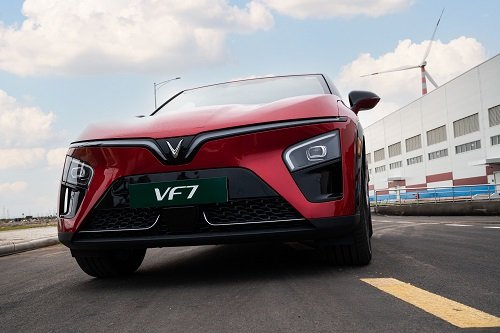Gurugram, Haryana, India | 27th August 2025: India’s electric vehicle (EV) ecosystem is charging ahead at record speed. Since 2022, the country’s public EV charging infrastructure has expanded nearly fivefold, reshaping the way urban India commutes. With major policy support, favorable consumer behavior, and global automakers like VinFast investing heavily, India’s EV revolution is gaining unstoppable momentum.
Rapid Growth of EV Charging Stations in India
By April 2025, India had 26,367 public charging points, compared to just 5,000 in 2022. Charging hubs are increasingly integrated into shopping malls, office complexes, and highways, making EV ownership more practical and accessible. For urban commuters traveling less than 35 km daily, EVs are becoming a cost-effective and sustainable alternative to traditional vehicles.
Cities at the Forefront of EV Adoption
With 37% of India’s population living in urban areas, cities are emerging as the primary drivers of EV readiness. Metro regions face higher pollution, denser traffic, and growing consumer demand—all factors accelerating EV adoption.
Progressive policies are further fueling the trend. For instance, Delhi mandates that one in five parking spaces in new residential complexes must have EV charging provisions. Such measures transform EVs from an aspirational choice into a practical necessity.
Policy Support Driving EV Growth
The Indian government and state authorities are introducing a range of incentives to strengthen EV adoption:
- Extended lifespan benefits: Regulators propose exempting EVs from the 15-year “End of Life” vehicle rule, boosting resale value.
- State-level subsidies: Maharashtra offers purchase subsidies of up to ₹2 lakh, while Tamil Nadu provides capital support to attract EV manufacturers.
- Reduced ownership costs: Delhi may once again waive road tax and registration fees for EV buyers.
- Financing reforms: Efforts are underway to encourage banks to lower interest rates and ease financing for EV purchases.
Most initiatives target urban markets, fleet operators, and corporate users—segments best positioned for early adoption.
VinFast Expands EV Footprint in India
Vietnamese automaker VinFast is entering India with an ambitious expansion plan. The company has partnered with multiple dealers to set up 32 dealerships across 27 cities, creating a 3S (Sales, Service, Spares) ecosystem. By year-end, 35 outlets will be operational in key hubs like Delhi, Gurugram, Noida, Bengaluru, Chennai, Hyderabad, and Pune.
VinFast’s strategy includes:
- A nationwide service and charging network in collaboration with RoadGrid, myTVS, and Global Assure.
- AI-powered diagnostics, real-time charging access, and digital service integration.
- Battery recycling partnerships to support sustainability.
New EV Manufacturing Hub in Tamil Nadu
In August 2025, VinFast inaugurated its first overseas EV assembly plant in Thoothukudi, Tamil Nadu, marking a USD 500 million investment. Built on a 400-acre site, the facility has an initial annual capacity of 50,000 vehicles, scalable to 150,000.
Key highlights:
- First models: premium VF 6 and VF 7 SUVs.
- Job creation: 3,000–3,500 positions, primarily for local workers.
- Strategic location: Proximity to ports and airports for exports to South Asia, the Middle East, and Africa.
- Future plans: Local supplier park, expanded manufacturing, and export-focused operations.
The Road Ahead for India’s EV Market
Although EV penetration in India remains in the single digits for four-wheelers, the foundation for rapid growth is firmly in place. Strong government incentives, expanding infrastructure, and global investments position India’s cities as the epicenter of the EV revolution.
VinFast’s bold entry reflects the rising confidence in India’s EV ecosystem. Automakers that align with policy priorities and invest in local manufacturing stand to gain the most as India transitions toward a sustainable, electrified future.




